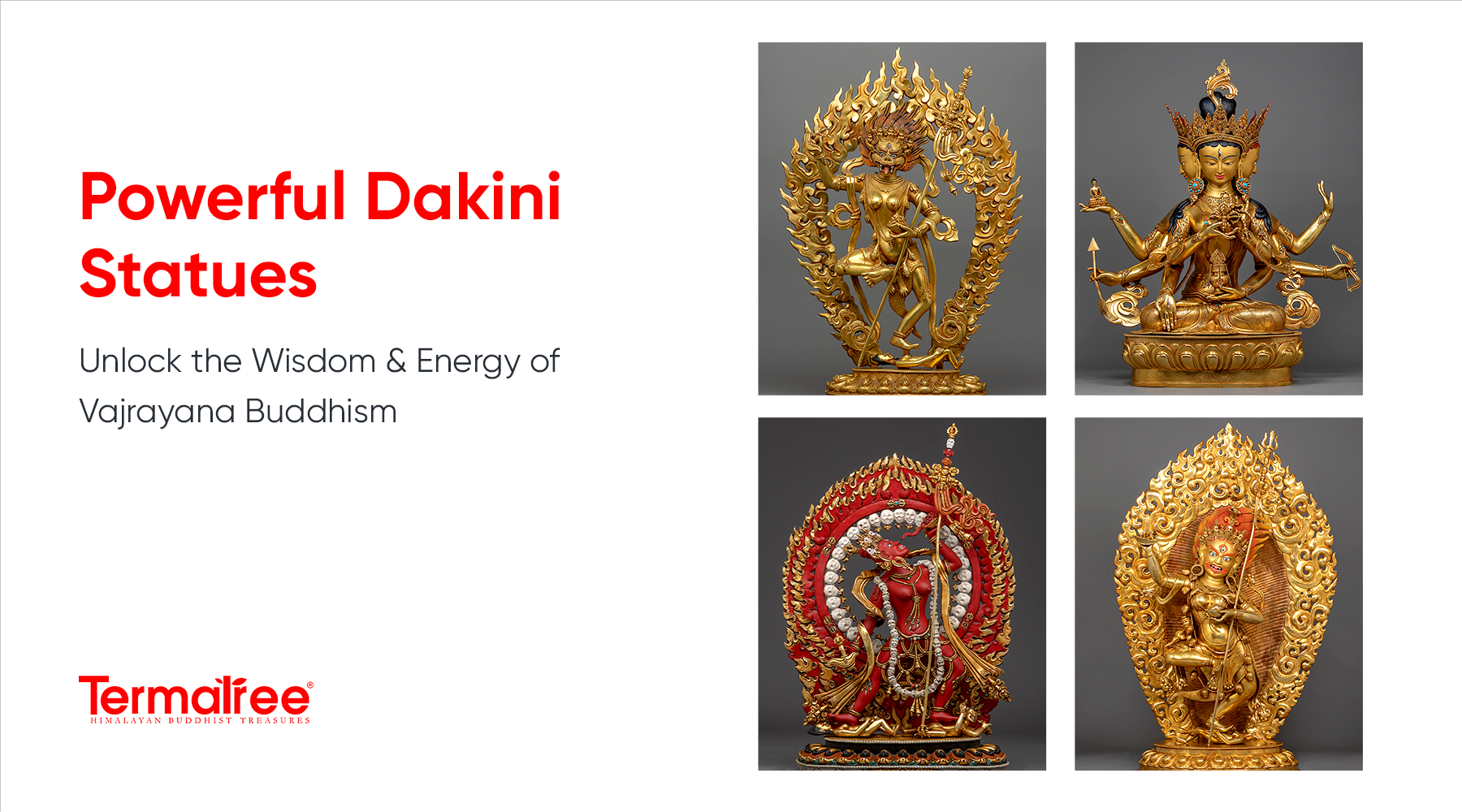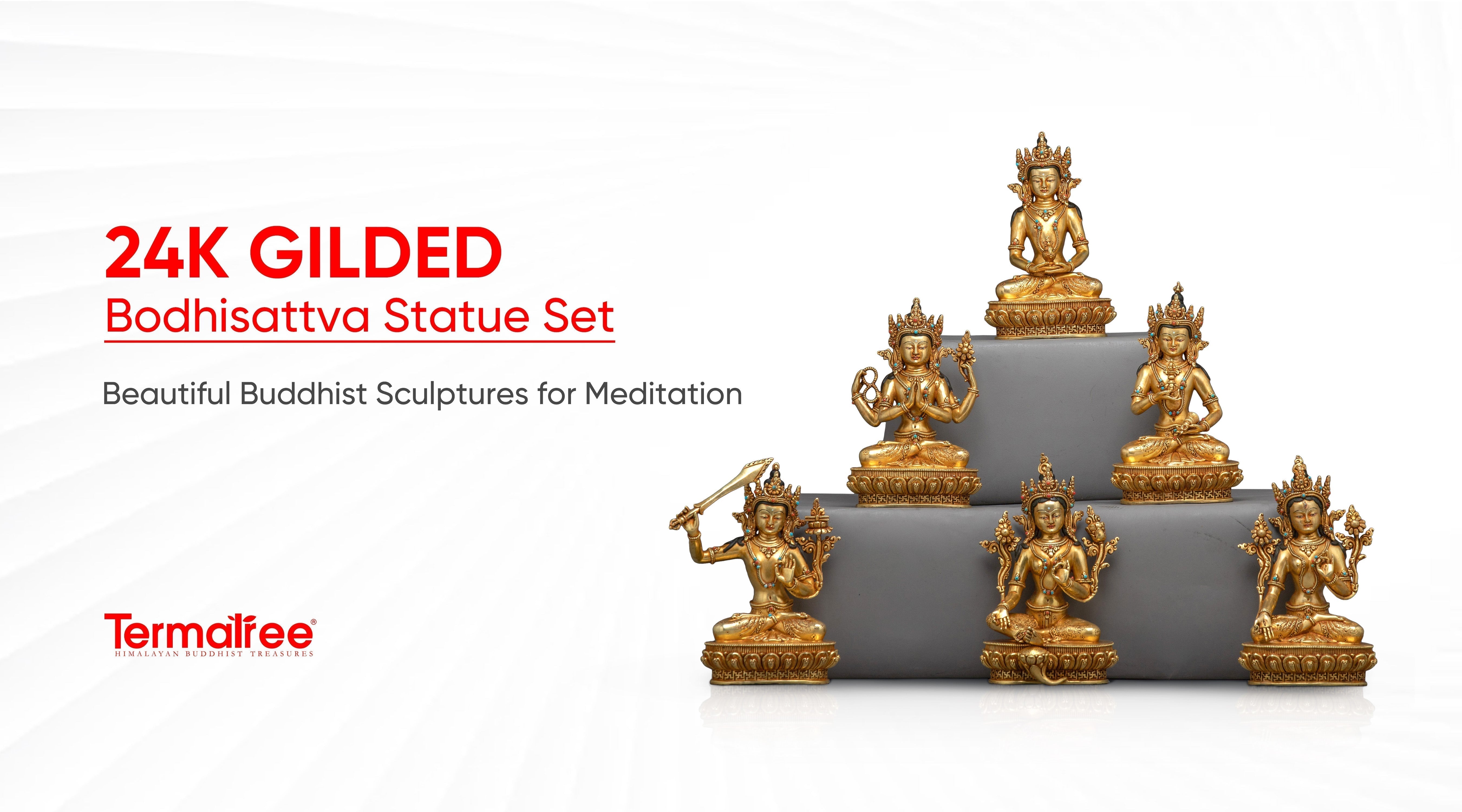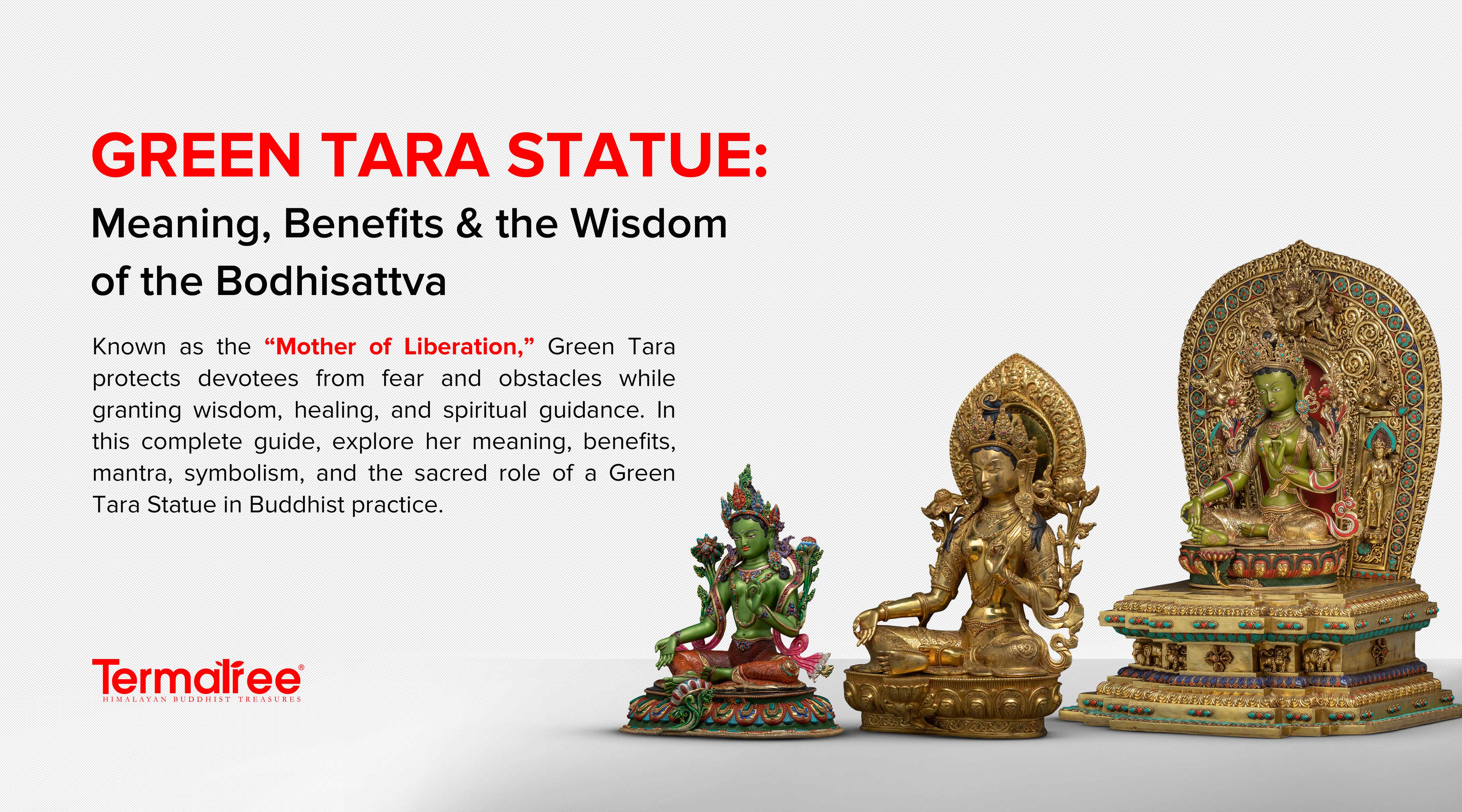Honoring the Silent Lion of Dzogchen
Our highlighted master for this week has lived as brilliantly as he was: Chatral Sangye Dorje Rinpoche, known as the "Silent Lion of Dzogchen", was a fearless allegiance to wisdom, unlimited compassion, and unassailable integrity. He lived as a yogi should—leaving aside fame, titles, and the habitual power associated with institutions, he became one of the most respected Dzogchen masters of the 20th and 21st centuries.
Chatral Rinpoche mainly taught through example, rather than some ritualized melodrama like many other dignitary clergy. He was a lifelong vegetarian and demonstrated a lifetime of effort toward the liberation of animals in all respects. He survived modestly, meditated thoroughly, and taught thousands with direct and immediate wisdom without needing words or gesticulated instruction. His teachings were always about an authentic experience and not learned knowledge, and so his legacy is continued today by those who follow the path of Realization.
This statue is a lasting presence and humbly represents his authority in a sacred presence that goes beyond art, because it is a transmission of the lineage, the discipline, and the blessing.
Who Was Chatral Rinpoche?

Born in Nyarong, Tibet in 1913, Chatral Sangye Dorje eventually became a non-sectarian master of Vajrayana Buddhism, who studied with some of the most realized teachers of his time: Khenpo Ngagchung, Sera Khandro, and Dudjom Rinpoche. He had transmissions in many lineages and was devoted to Dzogchen, the Great Perfection.
He became famous not for taking power, but for rejecting it. He even turned down being the head of a monastery or a high seat in Tibetan institutions and preferred to be a wandering yogi. He spent time in retreat in Tibet, Nepal, Bhutan, and India, lived in isolation, practiced in caves, and lived according to his realization.
Compassion in Action
Chatral Rinpoche was a pioneer in animal liberation. He saved the lives of countless beings every year. He practiced strict vegetarianism for most of his life and encouraged others to eat in non-harmful ways. He modeled his compassion, not just practiced a philosophy, in tangible actions every day.
He denied ordinations to monks who eat meat, providing a very strong ethical lever against traditional passivity. He often taught that compassion is empty without actionable measures—a philosophy he powerfully manifested in his life.
Guardian of the Dzogchen Lineage
Chatral Rinpoche remained veiled in mystery, but was considered one of the greatest Dzogchen masters of his lifetime. He held the primary lineage as the original holder of the Longchen Nyingtik teachings. He provided an authentic transmission of the Great Perfection and preserved it from modernization.
Some of the most respected lamas and yogis in the world today were his students. Into his late 90s, he was still engaged in daily practice, intensive retreats, and uttering genuine teachings that were not trapped in an institutional context.
The Life and Teachings of Chatral Sangye Dorje
The Embodiment of the Dzogchen Lineage
Chatral Rinpoche was recognized early on as an accomplished practitioner of Dzogchen or the "Great Perfection" of the Nyingma tradition. He was born in 1913 in Nyarong in Eastern Tibet, and he ultimately trained with many esteemed Dzogchen masters, including his first and main teacher, Khenpo Ngawang Pelzang, and he was later given direct teachings transmitted by Dudjom Rinpoche, etc. The training that he received was multi-faceted and involved the oral and textual transmission of Dzogchen teachings, so that he became an important link in the living lineage.
A Life of Simplicity and Radical Renunciation
But he did not have a life of knowing scholarly recognition in the secular sense, or supervision and administration of monastic activity. He chose a path of solitary yogic wandering enforced by long retreat periods of renunciation and disengagement from institutional power. He lived in ways to make transparency and simplicity visible in a world that is increasingly more institutionalized. He provided a radical example of independence and authenticity on the spiritual path because he lived a sense of impoverished autonomy and commitment to personal experience. Spiritual, authentic, unadulterated by dogma. His life was devoid of political aspirations or material distractions that could compromise his realization as a scholar, practitioner, and teacher. His depth and continuity of meditation allowed him to symbolize clarity and compassion without any nefarious intention associated with a conventional understanding of lineage or institutions.
Keeper of the Flame: A Living Dzogchen Lineage Holder
Chatral Rinpoche was one of a handful of people who carried the unbroken lineage of Dzogchen from pre-invasion Tibet into this time. He was a living embodiment of a 2600-year-old unbroken lineage and tradition of oral transmission from master to disciple. The name - "Chatral" (meaning "one who has renounced") - was not merely a title, but a living signifier of his path. His renunciation was not a public show; renunciation, in his view, was necessary to protect the integrity of the Dharma. He embodied all the teachings he offered, giving students not only the oral instruction in the form of texts but also a living mirror of the ultimate view.
Statue Specifications: A Portrait of Simplicity and Depth

| Size | 13”/33cm (Height) x 10.2”/26cm (Base) |
| Weight: | 6.06 kg |
| Material | 24K Gold Gilded, Acrylic Paintings, Silver Plated, Oxidized Copper Body |
This Chatral Rinpoche Statue featured is an homage to the pure, grounded essence of this rare master. This sculpture is made in Nepal and speaks to a combination of sacred tradition and contemporary Himalayan craftsmanship. The oxidized copper body imbues a sense of age and timelessness, thus is balanced by a rich layer of 24K gold gilding, alongside the silver-plated details carefully placed throughout, without infringing on the quiet humility of this statue.
The acrylic details layer upon themselves to evoke the character of Chatral Rinpoche in a thoroughly conscious and conscious way, from the drape and folds of his robes to the poise of the subtle meditation reflected in his posture. This statue would be perfect for any altar, meditation space, or personal shrine, referring to levels of authenticity.
The Iconography: Silent Strength Made Visible
Meditative Presence in Old Age
As Rinpoche is reflected in his later years, we can see him, seated in cross-legged meditation, peacefully resting in a state of grace, humility, and strength in stillness. He's charged in a way that carries his expression in the depth of serene strength, a place where tenderness meets commitment. A face that emerged from the depths of lonely solitude attained by his wisdom and practices in meditative coursework through a lifetime spent in silence and transition.
The Symbolic Robes and Crown

Chatral Rinpoche is dressed in traditional robes. The path of renunciation is communicated by robes which include a patched shawl, and tattered cloak worn by a wandering yogi. The figures garments have gold linings to indicate dignity and rank, yet still exude humility. The vajra crowned cap has a gold embellishment at the apex expressing the notion of completed mastery of the Vajrayana path and realization of the unmoving nature of the awakened state of mind.
Ritual Implements: Prayer and Emptiness
He carries a vajra, the symbol of sunyata, signifying endless rivers of creativity, potency and skillful activity, in his right hand, and loosely holds a ritual bell in his left hand, representing the wisdom of emptiness and the feminine side of enlightened awareness. From a single bell and a vajra we have the integrated method and wisdom, as a fundamental part of Vajrayana Buddhism.
A Radiating Form of Wisdom
When viewing the sculpture a sense is conveyed less of a realistic form and more of a vibration of presence indicating that Rinpoche is indeed seated before you. It is not a mere likeness, but rather an emanation and a visual token of realization requiring one to observe, reflect, and respectfully pause.
A Life of Boundless Contribution
A Relentless Advocate for Animal Liberation
One of Chatral Rinpoche’s most well-known accomplishments was his earnest dedication to animal liberation (Tsethar): the act of freeing animals from slaughter, and returning them to freedom. Rather than perform a symbolic act, he did it on a grand scale, liberating tens of thousands of animals on organized and frequent basis. He dedicated entire ceremonies to reinstate dignity and compassion to the smallest of sentient beings.
He taught us that saving lives, human or animal, was the most noble form of Dharma, because it offered no discriminating love. He formed annual rituals and gathered a group of students to release fish, birds and cows.
His intense relationship with all beings was extreme in practice, not simply in philosophical dispositions. He saved thousands from suffering and turned the minds of countless sentient beings toward compassion.
A Pillar of Non-Sectarianism
Although rooted in the Nyingma lineage, Chatral Rinpoche epitomized the Rimé (non-sectarian) movement, studying with and transmitting teachings to all the major schools of Tibetan Buddhism. He placed great importance on avoiding clinging to any one particular tradition, noting that wisdom does not belong to sects.
This practice allowed his teachings to inspire practitioners from a wide variety of backgrounds and unify rather than divide. His credibility as a representative of the spiritual community lent authenticity to interlineage dialogue and emphasized pursuing a pure motivation rather than a sectarian identification during his contributions to Tibetan Buddhism in the West.
Transmission to the Next Generation
While he never created a large organization, Chatral Rinpoche propagated a wide transmission of many practices explicitly designed for a small number of advanced students, and maintained stringent requirements for discipleship. He emphasized personal retreat, pure conduct, and daily practice over fame and privilege as a scholar. Among his disciples are some of the most highly respected lamas of our day, such as Dzigar Kongtrul Rinpoche and Sangyum Kamala Rinpoche.
He also transmitted teachings to Westerners, but only if they had achieved some level of sincere devotion and discipline. For Chatral Rinpoche, teaching was never about reputation; it was an honorable obligation.
Why This Statue Is More Than Art
While this statue is a visual representation, it is much more than that. It is an invitation to more profound stillness, to authenticity, to fulfill the Dharma without compromise. It is a representation of integrity in action, of realization grounded in simplicity, and of wisdom manifest in form.
If you are:
-
A practitioner of Dzogchen or Tibetan Buddhism looking for inspiration
-
A devotee wanting to pay respect to someone who is a true holder of a lineage
-
A collector of sacred Himalayan art
-
Or just someone who appreciates simplicity and ethical clarity
This statue becomes a spiritual anchor in your home or business. It does not yell, it radiates. It contains the stillness of retreat, the strength of pure motivation, and the blessing of unwavering awareness. It offers a reminder that awakening is not loud or flamboyant. It is based in the ground, fierce, and imbued with unlimited compassion.
The Blessing of Presence
Chatral Rinpoche may have passed into parinirvana in 2015, but his presence continues to be very alive—alive in students taught, lives saved, and sacred representation such as this one. He embodies not just memory, but method; not just history, but living transmission. Often saying the words:
"If you really want to benefit others, keep your own mind pure."
This statue embodies a clean mind—the weight of practice, the light of clarity, and the warmth of deep compassion. In a world filled with chaos and distraction, this image of Chatral Rinpoche becomes a refuge—a guide, protector, and friend for those taking the inner path. It is not merely an image of a master, but it keeps his teaching alive in the hearts of those who genuinely look.




